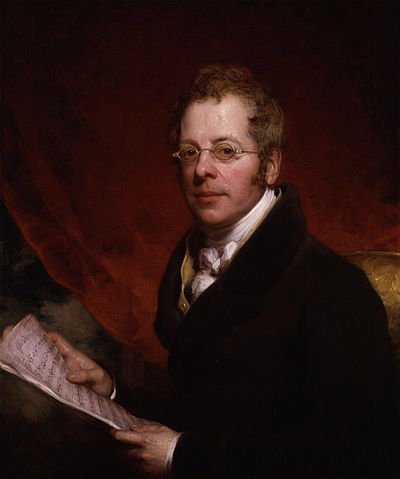Beethoven’s favorite Latin aphorism was “Ars longa, vita brevis” — “Art is forever but life is short,” stressing to him the necessity of composing as much as possible before the inevitable appearance of the grim reaper. He quotes the saying several times in his letters. Back in 1816, Beethoven composed the WoO 170 canon on this phrase (Day 291). In 1825, he composed another canon on the same words (WoO 192) and then a third that is dated by Barry Cooper with a double dose of uncertainty as “c. 1825?” (WoO 193).
Beethoven wrote the WoO 192 canon on “Ars longa, vita brevis” for Sir George Smart, who conducted the first performances of Beethoven’s Ninth Symphony in London on 21 March 1825 and who visited Beethoven later that year.

On 2 September 1825, George Smart arrived in Vienna. We can read his diary of this visit in the book Leaves from the Journals of Sir George Smart, published in 1907.
On 9 September he heard the first private performance of Opus 132 (Day 346):
This quartette is three-quarters of an hour long. They played it twice. The four performers were Schuppanzigh, Holz, Weiss, and Lincke. It is most chromatic and there is a slow movement entitled “Praise for the recovery of an invalid.” Beethoven intended to allude to himself I suppose for he was very ill during the early part of this year. He directed the performers, and took off his coat the room being very warm and crowded. (pp. 108–9)
On Friday, 16 September 1825, Smart journeys to Baden to meet up with Beethoven there.
He told me of a Mass, not yet published, which he had composed. We had a long conversation on musical subjects conducted on my part in writing. He is very desirous to come to England.…
I overheard Beethoven say, “We will try how much the Englishman can drink.” He had the worse of the trial. I gave him my diamond pin as a remembrance of the high gratification I received by the honor of his invitation and kind reception and he wrote me the following droll canon as fast as his pen would write in about two minutes of time as I stood at the door ready to depart. (p. 124)
A reproduction of the autograph follows page 124 in his book, somewhat mauled by Google Books.
Here’s how Thayer transcribed it in his 1865 catalog of Beethoven’s music. Because there’s no indication how multiple voices are to be assembled, this qualifies as a puzzle canon:

#Beethoven250 Day 349
Canon “Ars longa, vita brevis” (WoO 192), 1825
A studio recording of a realization of the puzzle canon for George Smart.
Much less is known about the WoO 193 canon on “Ars longa, vita brevis,” but the best guess is that it also dates from 1825.
The score appears at the bottom of page 4 of this publication on the Beethoven-Haus site. Because all the notes are parts of a C major triad, the canon can be realized in multiple ways.
#Beethoven250 Day 349
Canon “Ars longa, vita brevis” (WoO 193), c. 1825?
A studio recording.